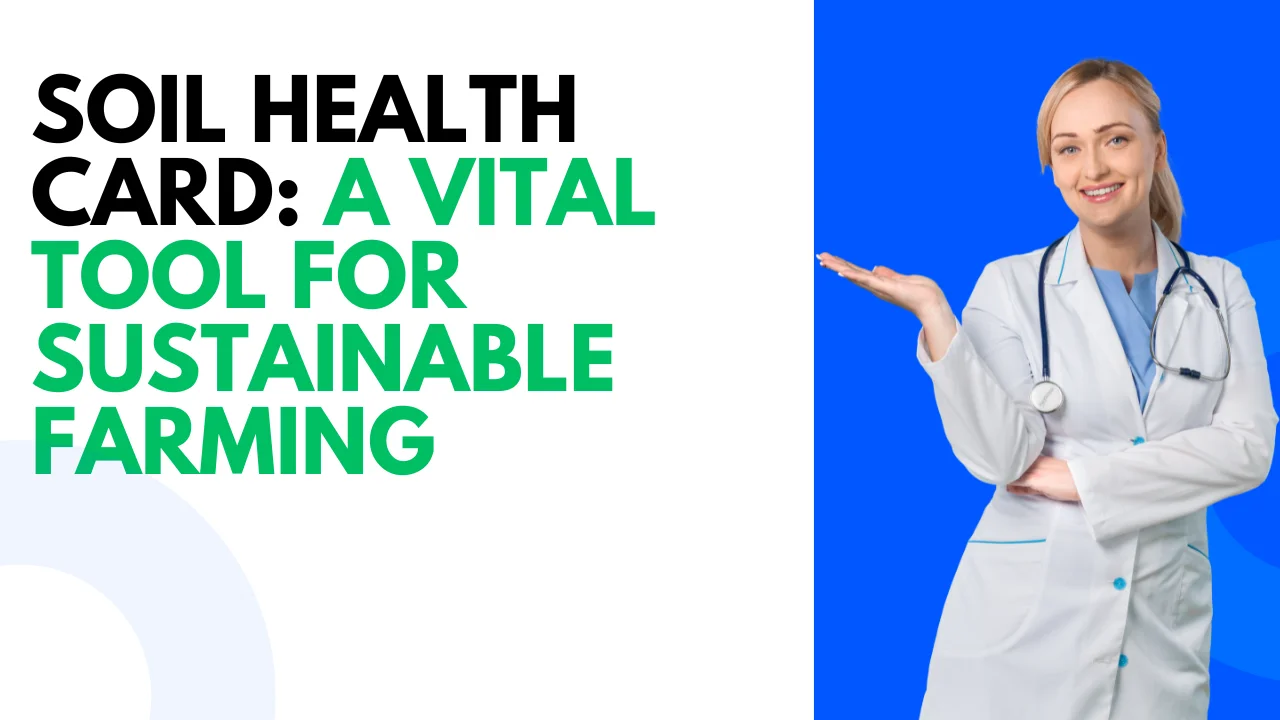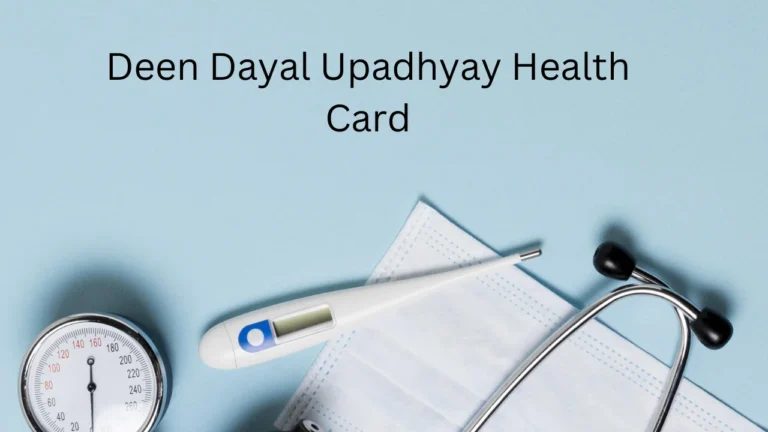Soil Health Card: A Vital Tool for Sustainable Farming

The soil health card is an essential tool for farmers, offering detailed information about the condition of their soil. This initiative, launched by the Government of India in 2015, aims to promote sustainable farming practices and enhance agricultural productivity. The soil health card provides a comprehensive analysis of soil quality, helping farmers make informed decisions about crop cultivation and soil management.
What is a Soil Health Card?
A soil health card is a document that reports the health status of soil with respect to 12 parameters, including nutrients like nitrogen, phosphorus, and potassium. The card also includes recommendations on the appropriate dosages of fertilizers and soil amendments required to improve soil health. This information is derived from soil samples collected and tested at designated laboratories. Farmers receive these cards every three years, ensuring they have up-to-date information to maintain soil fertility and productivity.
Importance of Soil Health
Soil health is crucial for sustainable agriculture. Healthy soil supports robust plant growth, improves crop yields, and enhances food security. The soil health card helps farmers understand the nutrient content, pH level, and organic matter in their soil. By following the card’s recommendations, farmers can optimize fertilizer use, reduce input costs, and minimize environmental impact. Proper soil management practices, guided by the soil health card, lead to better crop quality and increased profitability.
How Does the Soil Health Card Work?
The process begins with the collection of soil samples from farmers’ fields. These samples are tested for various parameters at government-approved laboratories. The test results are then compiled into a soil health card, which is handed over to the farmer. The card provides specific recommendations for nutrient management, including the types and quantities of fertilizers required. This personalized approach ensures that each farmer receives tailored advice based on the unique characteristics of their soil.
Benefits of the Soil Health Card
The soil health card offers numerous benefits to farmers. Firstly, it helps in identifying soil deficiencies and imbalances. This knowledge allows farmers to apply the right amount of fertilizers, preventing overuse and reducing costs. Secondly, the card promotes sustainable farming practices by encouraging the use of organic manure and green manure. These practices improve soil structure, enhance water retention, and boost microbial activity. Additionally, the soil health card helps in conserving soil resources and protecting the environment from pollution caused by excessive chemical use.
Implementing Recommendations
Following the recommendations on the soil health card can significantly improve soil fertility and crop productivity. Farmers are advised to use the recommended fertilizers in the suggested quantities. Over time, these practices restore soil health, leading to better yields and higher income. The soil health card also encourages crop rotation and the use of cover crops, which prevent soil erosion and enhance nutrient cycling. By adopting these practices, farmers can achieve long-term sustainability in their farming operations.
Real-Life Impact
Many farmers have experienced positive changes in their farming practices after adopting the soil health card recommendations. For instance, a farmer in Punjab reported a 20% increase in wheat yield after following the card’s guidelines. Similarly, a farmer in Maharashtra saw a significant improvement in soil texture and fertility by using organic manure as recommended. These success stories highlight the importance of the soil health card in transforming agricultural practices and improving livelihoods.
Challenges and Solutions
While the soil health card initiative has been successful, it faces some challenges. One major challenge is the lack of awareness among farmers about the importance of soil testing. To address this, the government and agricultural extension services are conducting awareness campaigns and training programs. Another challenge is the timely collection and testing of soil samples. To overcome this, mobile soil testing labs are being introduced to ensure faster and more efficient testing.
Future Prospects
The soil health card initiative has great potential to revolutionize agriculture in India. As more farmers adopt this tool, the overall health of agricultural land will improve, leading to higher productivity and food security. The government aims to expand the reach of the soil health card program and include more parameters in the soil testing process. Future plans also involve integrating digital technologies to provide real-time updates and recommendations to farmers.
Uses of Soil Health Card
The soil health card serves multiple purposes, all aimed at improving soil quality and agricultural productivity. By providing detailed information on the soil’s nutrient status, pH levels, and organic matter content, the card helps farmers make informed decisions about their soil management practices. Here are some key uses of the soil health card:
- Nutrient Management: The card offers specific recommendations on the types and quantities of fertilizers to use, ensuring balanced nutrient application. This prevents over-fertilization, which can harm the soil and reduce crop yields.
- Improving Soil Health: The soil health card promotes sustainable farming practices by suggesting the use of organic manure, crop rotation, and green manure. These practices enhance soil structure, increase microbial activity, and improve water retention.
- Cost Reduction: By following the precise fertilizer recommendations, farmers can reduce their expenditure on chemical inputs. The card helps in avoiding unnecessary fertilizer use, thus saving costs and increasing profitability.
- Environmental Protection: Proper nutrient management as advised by the card helps in reducing the risk of soil and water pollution caused by excessive chemical use. This leads to a healthier environment and sustainable farming systems.
- Enhanced Crop Productivity: The personalized recommendations provided by the soil health card help in improving soil fertility, leading to better crop yields and quality. This ultimately supports food security and farmer livelihoods.
How People Get Benefit from Soil Health Card
Farmers across India have witnessed significant benefits from using the soil health card. The initiative has positively impacted their farming practices, leading to improved soil health and increased agricultural productivity. Here’s how people benefit from the soil health card:
- Informed Decision Making: Farmers receive a comprehensive analysis of their soil, which helps them make informed decisions about nutrient management. This reduces guesswork and ensures precise application of fertilizers.
- Increased Yields: By following the recommendations, farmers can optimize the nutrient balance in their soil, resulting in higher crop yields. Improved soil health leads to robust plant growth and better harvests.
- Cost Savings: The card’s guidance on appropriate fertilizer use helps farmers avoid the overuse of costly chemical fertilizers. This not only saves money but also enhances the profitability of their farming operations.
- Sustainable Farming: The soil health card encourages the adoption of sustainable practices such as the use of organic manure and crop rotation. These practices improve soil fertility and structure, ensuring long-term agricultural sustainability.
- Environmental Conservation: By promoting balanced nutrient application and reducing chemical use, the soil health card helps in protecting the environment. It minimizes soil degradation and prevents water pollution, contributing to overall ecological health.
Benefits of Using Soil Health Card
| Benefit | Description |
|---|---|
| Informed Decision Making | Comprehensive soil analysis helps farmers make precise nutrient management decisions. |
| Increased Yields | Optimized nutrient balance leads to higher crop yields and better harvests. |
| Cost Savings | Guidance on fertilizer use prevents overuse, saving money and enhancing profitability. |
| Sustainable Farming | Encourages practices like organic manure and crop rotation to improve soil health. |
| Environmental Conservation | Balanced nutrient application reduces chemical use, protecting soil and water quality. |
Frequently Asked Questions
What information does the soil health card provide?
The soil health card provides detailed information on soil nutrient status, pH levels, and organic matter content. It includes specific recommendations for fertilizer types and quantities to optimize soil health.
How often should farmers get a soil health card?
Farmers should get a soil health card every three years. This ensures they have up-to-date information about their soil’s health and can make informed decisions about their soil management practices.
How can farmers benefit from using a soil health card?
Farmers benefit from the soil health card by making informed decisions about nutrient management, leading to increased yields, cost savings, sustainable farming practices, and environmental conservation.
What sustainable practices does the soil health card promote?
The soil health card promotes sustainable practices such as the use of organic manure, crop rotation, and green manure. These practices improve soil structure, enhance microbial activity, and ensure long-term soil fertility.
Conclusion
The soil health card is a powerful tool that empowers farmers with the knowledge to manage their soil effectively. By following the recommendations provided, farmers can achieve better crop yields, reduce costs, and promote sustainable farming practices. The success of the soil health card initiative depends on the active participation of farmers and the continued support of the government and agricultural institutions. As we move towards a more sustainable future, the soil health card will play a crucial role in ensuring the health and productivity of our soil resources.






